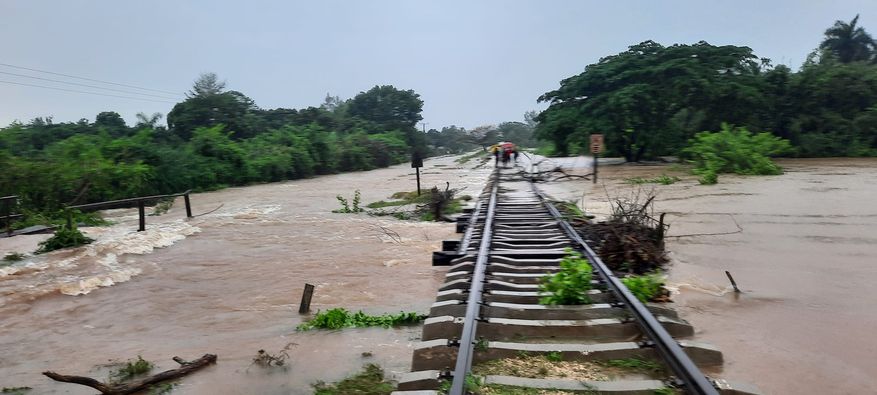
Las Tunas has begun the recovery of damage to homes and other infrastructure after the intense rains that hit last week, especially to the south of its geography, with local records of more than 300 millimeters and an average of more than 100.
Las Tunas, Cuba.- The weather station of "Amancio", in the homonymous municipality, recorded 346.2 millimeters of rain from last Tuesday until dawn on Sunday, the most significant accumulated in the territory in a similar period, informed Alexei Moreno, deputy technical director of the Provincial Meteorological Center. The trough that influenced the territory in recent days, he said, left rain throughout the province. Although the largest downpours occurred in the southern municipalities; which also suffered the impact of the runoff from the neighboring province of Camagüey.
The expert announced that the weather conditions will continue to improve since the trough has already advanced towards the center-west of the country; but, he noted, in the afternoon there could be some typical rains of this season.
The Las Tunas reservoirs are, as a whole, at 65 percent of their storage capacity, specified Mirtha García Reyes, the delegate of Hydraulic Resources; although two are at full volume, and eight others are relieving.
More than 420 homes were damaged, of which three were completely destroyed and 14 lost their roofs, according to preliminary figures released by the Provincial Defense Council. The floods made it necessary to evacuate 1,873 people, 98 percent to their relatives’ households. At dawn on Sunday, the evacuees had dropped to 973 citizens.
The Las Tunas Electric System reported that the number of damages to its infrastructure raised by 56 per day; the most severe were in the coastal town of Guayabal, Amancio municipality; and in Tana, “Colombia.”
Damage to crops is still being accounted for.
Given the possibility of similar or worse meteorological events, Manuel René Pérez Gallego, president of the Provincial Defense Council, indicated a detailed review of the technical state of all the reservoirs. It is necessary, he suggested, to model the rise of water in their vicinity when heavy rains occur.
Similarly, Jaime Ernesto Chiang Vega, vice president of the command structure, considered it pertinent to improve the communication between the municipal defense councils so that they can react in time to the rising waters; thus, mitigating risks and accelerating their response. Both leaders pondered the understanding, support, and discipline of the population in the face of an event that suddenly put in tension the protection mechanisms created for this purpose.





